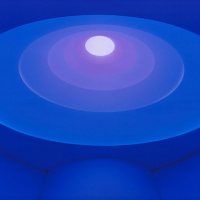
What is watercolor?
Watercolor refers to both the medium and the resulting artwork created using pigments suspended in a water-soluble vehicle. Watercolors are known for their luminous, transparent appearance because the pigments are applied in pure form with minimal fillers. By adding Chinese white, the watercolor can become opaque, resembling gouache.
Show All
- Show All
- Established
- Discoveries
Show All
ARTWORKS RELATED TO WATERCOLOR
Alighiero Boetti
Non parto non resto (Nove quadrati), 1979
Drawing / Watercolor
Watercolor
Inquire For Price
Donald Sultan
Lantern Flowers - Blue/Black background, 2017
Limited Edition Print
Watercolor
USD 4,350
Donald Sultan
Lantern Flowers - Yellow/Black background, 2017
Limited Edition Print
Watercolor
USD 3,750
Donald Sultan
Lantern Flowers - Red/Black background, 2017
Limited Edition Print
Watercolor
USD 4,350

The Light and Space Movement refers to loosely affiliated art movements connected to minimalism, geometric abstraction, and op art that originated in Southern California in the 1960s. Greatly influenced by artist John McLaughlin, these artists focused on sensory phenomena such as light, perception, and space as central elements of their work. They also incorporated cutting-edge technologies from the aerospace and engineering industries to develop light-filled and sensuous objects, creating immersive experiences that emphasize the viewer's perception.

Sound Art is an artistic discipline where sound is used as the primary medium. Like other contemporary art genres, Sound Art is inherently interdisciplinary, engaging with a variety of subjects including electronics, acoustics, noise music, psychoacoustics, audio media, video, film, and sculpture. Early examples of Sound Art include Luigi Russolo's noise intoners, as well as experimental works by Surrealists, Dadaists, and the Fluxus movement. These early pioneers helped establish sound as a legitimate medium for artistic expression.
















